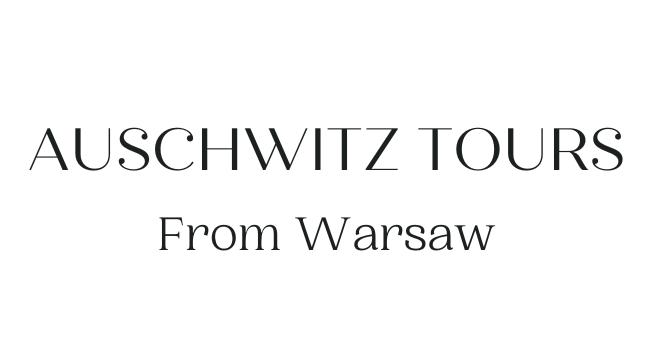Is Warsaw Worth Visiting? 15 Reasons to Visit Warsaw
Is Warsaw worth visiting? Absolutely, and the next few pages show you why. Poland’s capital mixes rebuilt Old-Town charm with bold street art, hearty pierogi with craft coffee, and quiet riverside walks with late-night live gigs.
You’ll hear Chopin drift from park speakers, see murals on old factory walls, and learn stories that hit harder than any guidebook can tell. Stick around for fifteen solid reasons that prove Warsaw isn’t just a quick stop. It’s a city you’ll want to brag about once you’re home.
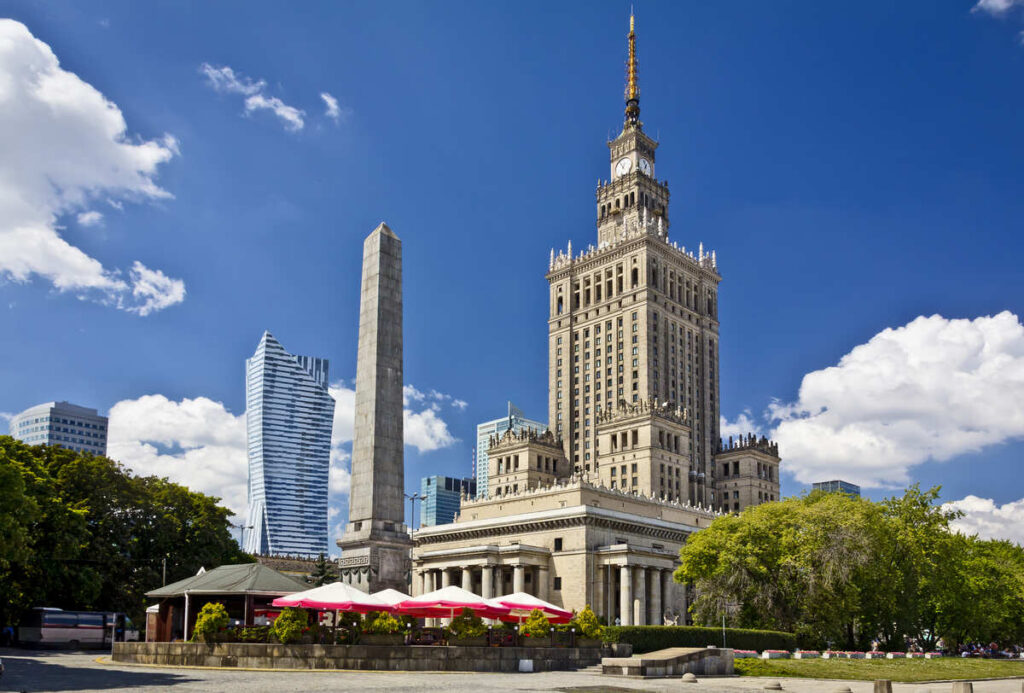
Short Summary – Is Warsaw Worth Visiting? Absolutely.
- Warsaw is a city full of history, culture, and attractions to explore.
- You can learn about history with day trips to Auschwitz concentration camps
- It’s budget-friendly with plenty of free attractions, cheap eats, and affordable accommodations.
- There’s something for everyone, from museums to galleries to vodka tastings!
15 Reasons to Visit Warsaw, Poland
Thinking about Warsaw? The quick answer is yes, it’s worth every minute. But a one-liner can’t cover it all. Let’s go through why Poland’s capital deserves a place on your trip.
History and Culture
Warsaw began as a small fishing spot on the Vistula. Things changed when King Sigismund III hauled the royal court north from Kraków in 1596. Trade flooded in, palaces popped up, and café chatter filled the streets.
Then came hard knocks: uprisings, the 1920 showdown with the Red Army, and finally World War II, when bombs leveled about 85 percent of the city.
Locals wouldn’t accept an empty map, so they rebuilt brick by brick using old sketches and paintings. Walk the cobbles of the Old Town today and you’ll spot the Royal Castle’s new-yet-old red walls, the Copernicus statue on Krakowskie Przedmieście, and colourful townhouses that look lifted from a history book.
Duck into the Warsaw Uprising Museum for stories told with photos, film reels, and a heart-thumping sound tunnel that mimics the front line.
When evening hits, grab pierogi on Piwna Street and listen to street musicians play Chopin, he grew up just a few blocks away. How interesting!
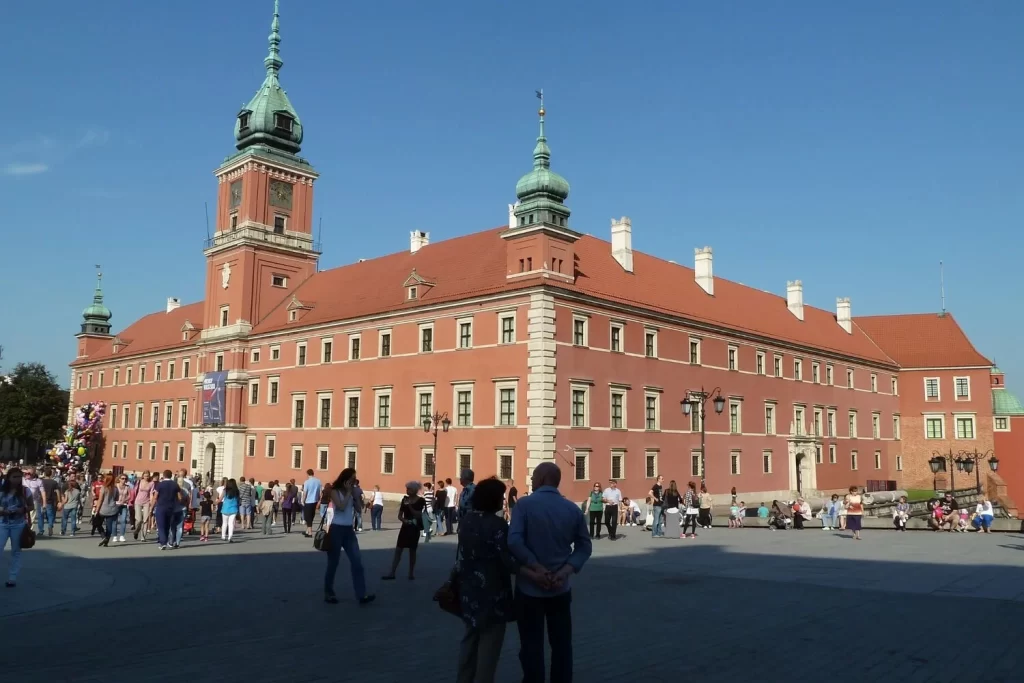
Day Trips to Auschwitz
Warsaw is full of energy, yet a single day trip south will ground you in one of the most important chapters of modern history. The Auschwitz-Birkenau Memorial and Museum are near the town of Oświęcim, roughly 300 km from the capital.
You can take an early train to Kraków (about 2 hours 40 minutes) and switch to a coach or minibus for the final stretch, which takes another 90 minutes or so. If you want everything handled, we run door-to-door private and group tours from Warsaw to Auschwitz.
Our tours pick you up before dawn and get you back late evening, leaving you free to focus on the experience itself.
Expect a long day, but also one you’ll never forget. You’ll walk under the “Arbeit macht frei” gate, step inside the brick barracks where prisoners once slept three to a bunk, and stand on the railway ramp at Birkenau where countless families were torn apart. Guides keep the commentary clear and direct, sharing survivor testimonies alongside hard numbers. It’s heavy, yet essential when visiting.
We also offer tours that include a visit of Krakow, so you can spend some time in the city in case you haven’t planned it.
Practical tips: book your entry slot weeks ahead, bring valid ID, wear comfortable shoes, and pack snacks. Food options near the site are limited. Photography is allowed in most areas, but keep your phone silent and your tone low; it’s a place for reflection.
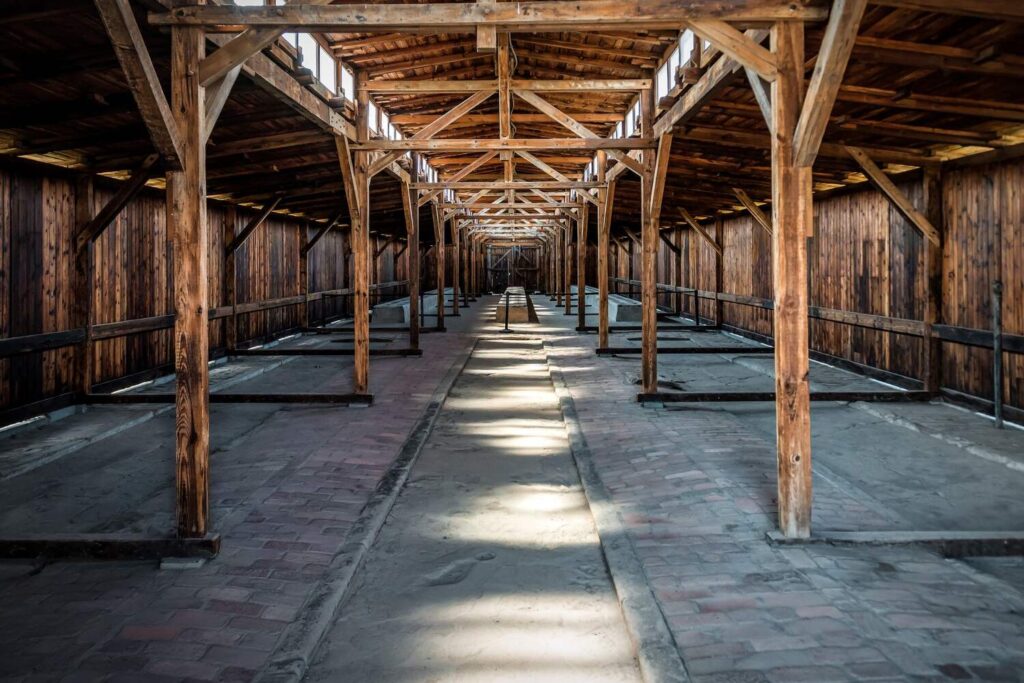


The Communism Tour in an Original Socialist Van
Ready for a different kind of city tour? Climb into a rattling Nysa 522, a boxy van straight out of the 1970s. The driver slams the door, the engine coughs to life, and you’re off.
Over the next three hours, you roll past grey apartment blocks, neon signs frozen in time, and the giant Palace of Culture and Science—Stalin’s “gift” that still dominates the skyline.
At Constitution Square, the guide points out old propaganda mosaics. In Muranó,w you see how Soviet planners tried to erase pre-war streets with wide avenues. Then, there’s a quick stop in a milk bar for beetroot soup and cheap pancakes, the same way locals ate under ration cards. Back in the van, the guide pulls out faded ration coupons and jokes about endless queues for toilet paper.
The tour wraps up at Łazienki Park, where ducks paddle past classical statues, proving the city doesn’t stay grey for long. By the end, you’ve seen Warsaw’s concrete past and its colourful comeback, all without leaving your seat.

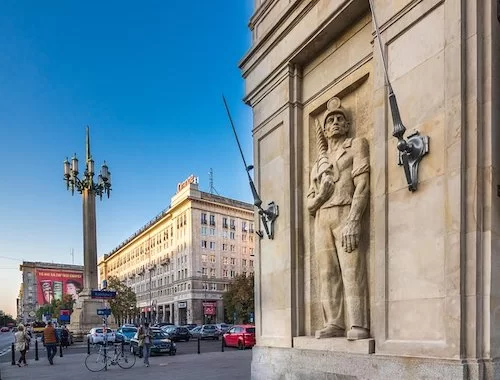
World War II
From 1939 to 1945 Nazi troops turned Warsaw into a battleground. Hitler rolled in that first October, and over the next six years the occupiers wiped out close to nine-tenths of the city’s buildings. Museums, libraries, whole streets gone.
The Jewish community felt the hardest blow. By late 1940, every Jewish family had to move into a walled ghetto where hunger and disease spread fast.
In April 194,3 those inside rose up with homemade weapons and fierce courage. They lost the fight, yet their stand still echoes in today’s Warsaw.
Check the Monument to the Ghetto Heroes or visit the Warsaw Rising Museum to see photos, letters, even the sewer tunnels fighters once used. You’ll leave with a lump in your throat but a clear picture of how the city earned its stubborn spirit.
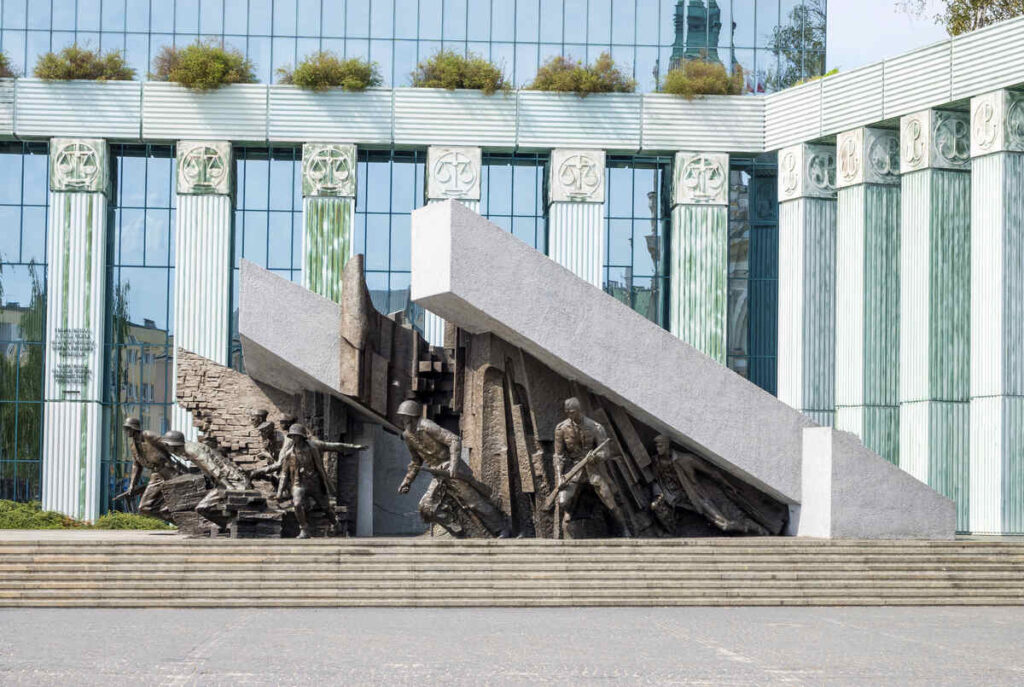
Chopin Concerts in Warsaw
Nothing says Warsaw like a live Chopin recital. Skip the streaming app and hear a pro at the piano. Our go-to spot is ZPAF Old Gallery, right next to the Royal Castle.
Candle-lit room, squeak of wooden floors, glass of Polish wine in hand, it feels like the composer just stepped out for fresh air. After the last note, the pianist usually sticks around for a quick chat, so you can ask what it’s like to tackle a brief Étude in front of a crowd.
After the last chord fades, there’s usually a small pause before the clapping starts. It’s that kind of atmosphere. The pianist often stays behind for a bit too. No stage-door moment, just a casual chat if you want to ask how they learned to play like that, or what Chopin piece makes them sweat.
If you’re in Warsaw even for just a couple of days, fit this in. But book ahead. These concerts fill up quick, especially in summer or around holidays. The good seats go first, and trust us, it’s worth sitting up close.
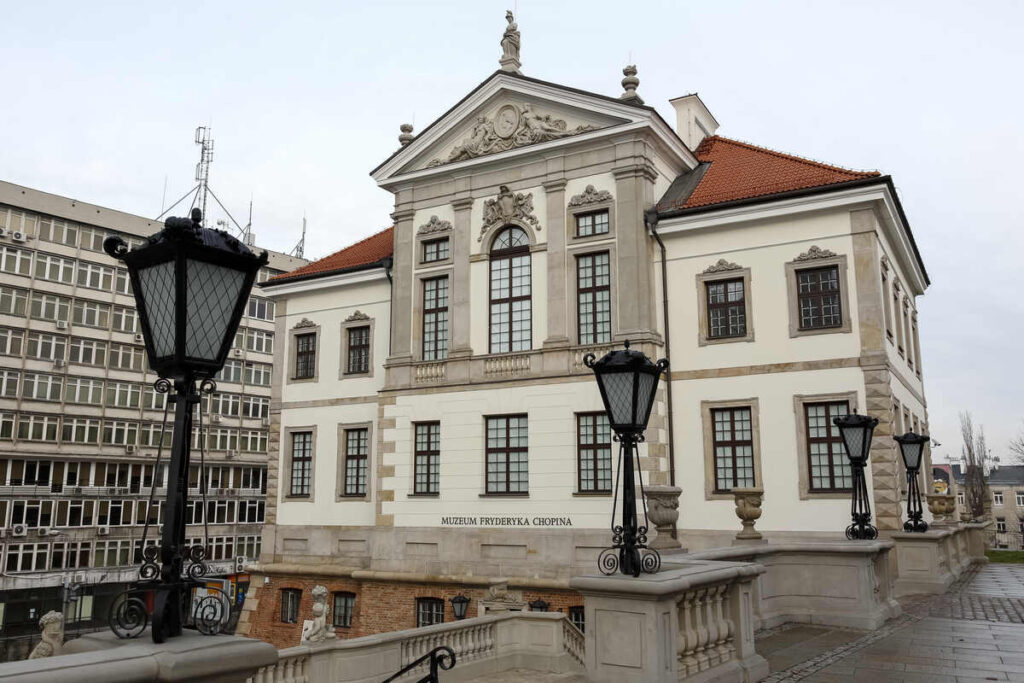
Museums and Galleries
Got an afternoon to spare? Pop into POLIN to trace a thousand years of Jewish life in Poland. There are interactive displays, family diaries, and a replica wooden synagogue ceiling that pulls every neck upward.
Two tram stops away, the National Museum lines its halls with Polish masters and a huge medieval altar that looks carved yesterday. If science history grabs you, the tiny Marie Curie Museum on Freta Street is brilliant. You’ll see her lab notes (and the faint glow of radioactive glass).
On the way back, pass by the Royal Castle, the cobbled Old Town Market Square, and the Presidential Palace.
They’re picture-perfect now, but each stone reminds you how Warsaw rose from nothing and kept going.
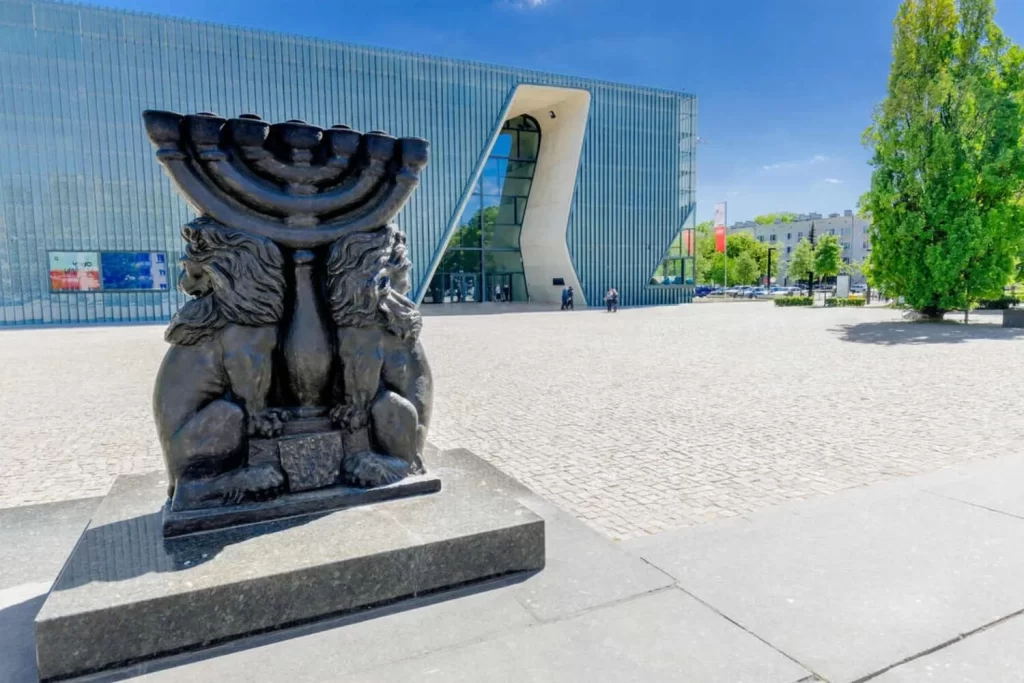
The Romantic Vistula River
You probably don’t think of Warsaw as a romantic spot right away, but spend one evening by the Vistula and that might change.
Start on the river boulevards near the Copernicus Science Centre, food trucks, buskers, and wide paths for an easy walk. If you have time, grab bikes (there’s a Veturilo rental dock every few blocks) and ride south past the beach bars.
Want to level it up? Book a sunset cruise. It’s slow, cheap, and you get skyline photos without crowds in the frame. On warm nights, the barges on the Praga bank turn into pop-up bars, so you can end the evening with a romantic moment and a view of the Old Town lights.
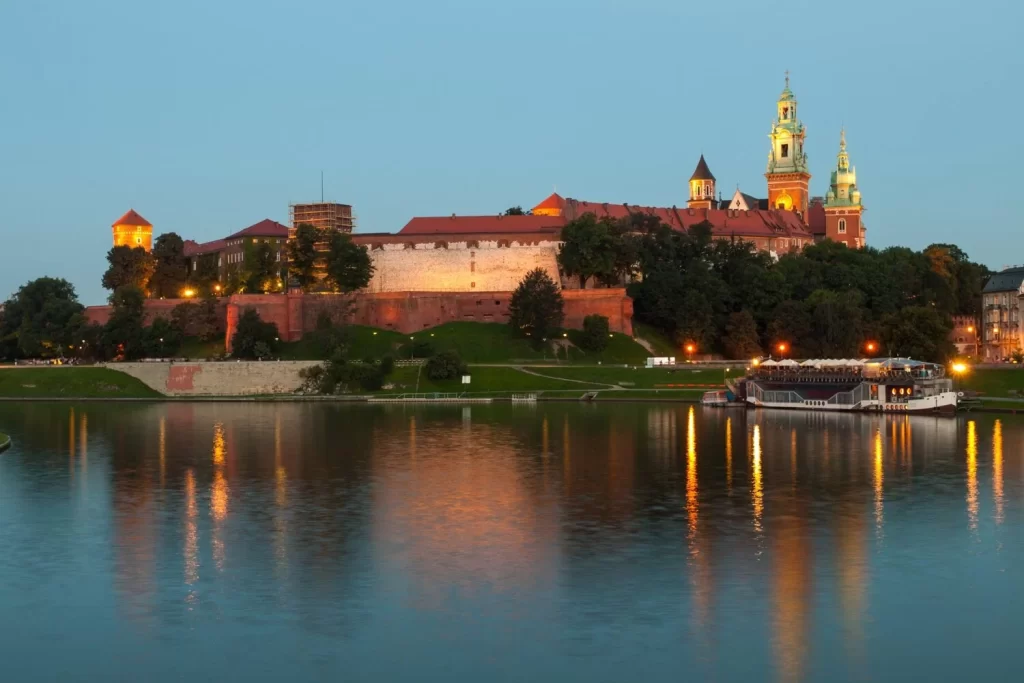
Cultural Events
Warsaw doesn’t sleep through the year. No matter when you visit, odds are there’s a festival, concert, or cultural event happening somewhere.
Spring kicks off with the Cross-Culture Festival: global bands, dance workshops, food stalls. June drops the Orange Warsaw Festival, big-name pop and indie on one stage.
Jazz Jamboree shows up in autumn and fills late-night clubs with live improv. Winter brings light shows around the city and Christmas markets around Castle Square. Posters at Metro stations list what’s next, or just check the city’s events page before you land.
And when you’re ready to wind down, visit the Palace of Culture and Science. There’s usually something going on inside, from theatre to film screenings, or just enjoy Łazienki Park if you want a quiet cultural moment.

Architecture
Warsaw isn’t one of those cities where everything matches, and that’s kind of the point. The architecture here is all over the place, and you must not forget your camera.
Start in the Old Town, where the buildings look centuries old… because they are. Or rather, they were. Most of this area was destroyed in WWII and rebuilt from scratch using old paintings and photos. The result? A picture-perfect square with colourful facades, narrow lanes, and red-roofed townhouses.
Then you’ve got the total opposite: the Palace of Culture and Science. It’s massive, grey, and impossible to miss. Stalin gifted it to the city, and let’s just say not everyone loved the idea. But now it’s kind of iconic, a mix of old-school grandeur and leftover Soviet boldness.
Walk down Chmielna Street and you’ll see old pre-war buildings right next to glassy office towers. Over in Praga or Kamionkowska Street, you’ll find cool modern designs popping up where old factories once stood. Some buildings still have bullet holes. Others are sleek, white cubes that wouldn’t look out of place in Scandinavia.
Lastly, art exhibitions are not just inside museums. You’ll find it on random walls, under bridges, even in the shape of statues in the middle of roundabouts. If you love cities with layers and contrast, Warsaw will give you plenty to look at, sometimes even on the same block.

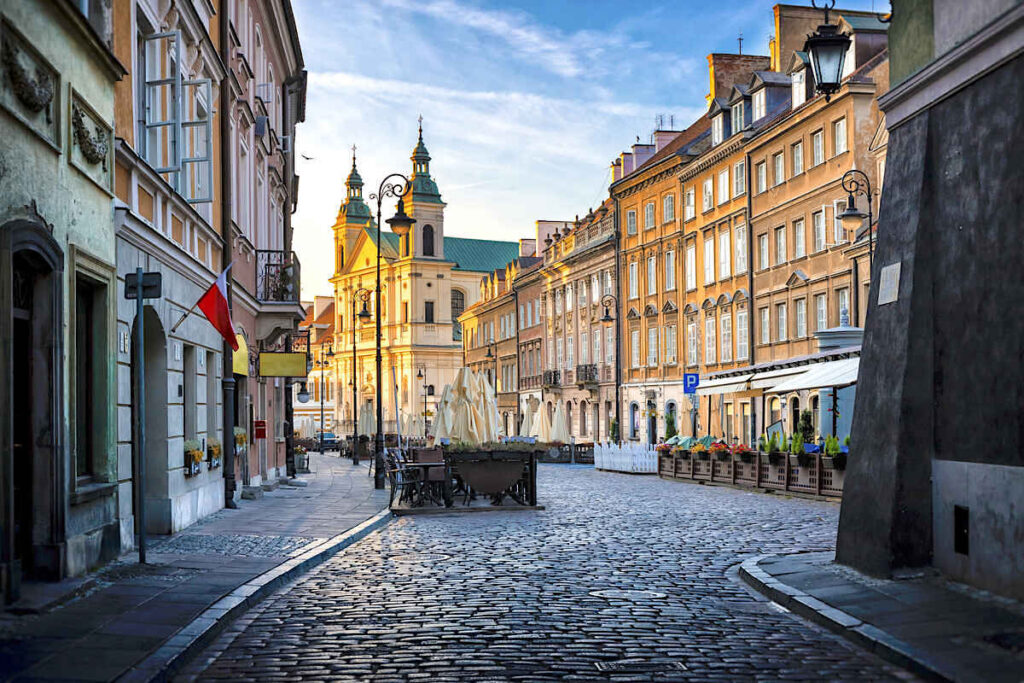
Polish Food
Warsaw feeds you well, no question. Start with the Polish staples, pierogi loaded with mushroom and cabbage, potato pancakes crisp around the edges, thick beetroot soup that warms you even in July.
For a quick hit, go to Zapiecek and point at the menu pictures; the waiters know the drill. Want steaks and big sides? Whiskey in the Jar does meat, rock music, and show-off cocktails in jars
InFormal Kitchen leans modern: open fire, local veg, good wine. If you’d rather pick at small plates while sipping something nice, Restauracja Future & Wine is your spot.
Not in the mood for Polish? No problem. There are plenty of Thai, Indian, taco joints, and family-run pizzerias around the city. Unsure where to begin? Book a walking food tour in Warsa.
A local guide will drag you into back-street milk bars, hidden dumpling shops, and a bakery that still uses a 19th-century oven. You’ll leave full and ready for a nap.

Vodka Culture and Pub Crawls
For us Polish, Wodka isn’t just a shot in Warsaw; it’s history in a glass. Head over to the Polish Wodka Museum in the old Koneser distillery. You’ll poke around copper stills, sniff rye mash, and learn why Polish people argue over potato versus grain.
The tasting at the end lines up three clear glasses, different regions, different bites.
When night falls, join a vodka crawl. A guide will lead you through snug bars and neon basements, pouring flavoured shots, cherry, quince, hazelnut, between stories about cold winters and warm toasts.
You’ll toast “na zdrowie!” more times than you can count, make a few new friends, and stumble back to your hotel with a newfound respect for clear liquor.
Chocolate Scene
Warsaw is a true paradise for chocoholics. In fact, It is one of the top 10 importers of cocoa products in the world, making it an ideal destination for those who love indulging in the sweet stuff.
There are many chocolate shops in Warsaw that offer a variety of chocolate products, from traditional bars to unique specialty items.
Karmello Chocolatier and Manufaktura Czekolady Chocolate are some of the best chocolate shops in the city with a wide selection of chocolates, including pralines, truffles, and much more.
So, if you’re looking for a delicious and indulgent experience, the chocolate scene in Warsaw is sure to satisfy your sweet tooth!
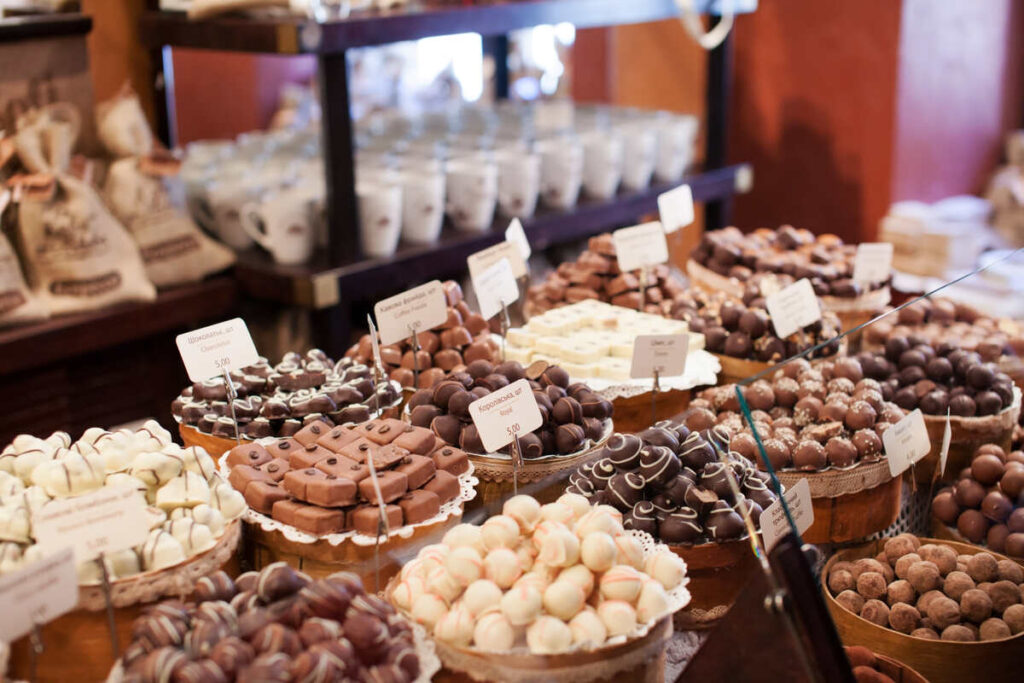
Praga District
Praga District in Warsaw is an OG district, situated on the east side of the Vistula River. It was its own town back in 1648, but got absorbed by Warsaw at the end of the 18th century.
Praga is a vibrant district with a mix of modern and old buildings, making it a great place to explore. The district’s history is deeply rooted in World War II, as it was the site of the Warsaw Ghetto and the Warsaw Uprising.
Despite its history, Praga is now a wonderful area full of urban art, cozy cafes, and pre-war buildings.
The Royal azienki Park, the presidential palace, castle square and the Old Town Market Square are all must-see attractions in Praga. Visiting Praga is an incredible way to get to know the city and its history, as well as enjoy the culture of Central Europe.
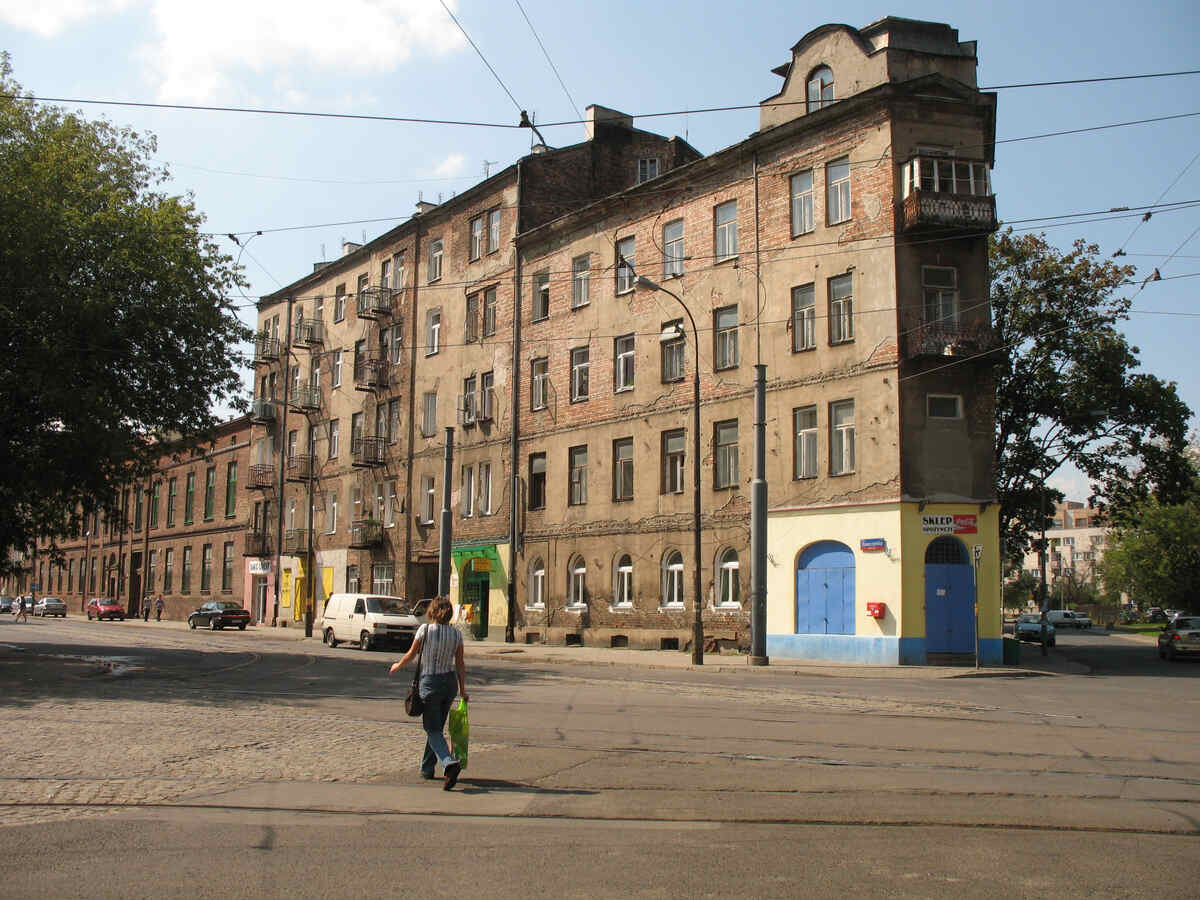
Budget-Friendly Accommodation and Restaurants
If you’re looking for a budget-friendly vacation destination, Warsaw is the perfect city for you.
That’s right – with cheap restaurants and affordable museums to explore, Warsaw has something to offer. For starters, Warsaw’s many parks such as Azienki Park are free to explore, and the Old Town is a great place to wander around and take in the sights.
You can also sample some delicious pierogis, which are a local specialty, for a fraction of the price of other meals.
And when it comes to accommodations, there are plenty of budget-friendly hotels in town, which is excellent for budget travelers.

Seasons in Warsaw
No matter the season, Warsaw is worth visiting. In spring, the parks pop with pink and white blossoms, and Easter means iced-sugar babka in every bakery window.
You can expect 10-15 °C during the day, so a light jacket is fine. Summer pushes up to the mid-20s. Outdoor bars set up along the Vistula, and festivals like Orange Warsaw keep music playing until well past midnight.
Autumn cools down to hoodie weather while the trees in Łazienki Park turn gold and red. Bring a camera, it’s that good. Winter dips below zero, but the city goes full fairy-light mode.
Castle Square hosts a big Christmas market, there’s an ice rink in the Old Town, and nearly every café serves hot mulled wine. Pack layers, grab gloves, and you’ll be warm enough.

Is Warsaw Worth Visiting? – FAQ
Now that you have a better understanding as to why it’s worth visiting Warsaw, let’s dig a little deeper and answer some questions from first-time visitors.
What is Better: Warsaw or Krakow?
It really depends on what kind of trip you want. Warsaw is bigger and more spread out. It feels more like a busy capital, with lots of museums, shops, modern buildings, and some cool spots to eat and hang out. It’s always changing, and there’s a lot going on.
Kraków is smaller and easier to walk around. The old part of town is really well kept, and there are castles, churches, and little streets full of pubs and cafés. It’s closer to the mountains and other places people usually visit too.
If you like history and want something cosy and easy, Kraków might be a better pick. If you prefer a faster pace, more variety, and a mix of old and new, Warsaw’s great. Both are worth visiting. But it just depends on personal preferences.
How Many Days in Warsaw is Enough?
Planning a three days in Warsaw itinerary is a good amount. On day one, walk around the Old Town. It’s been rebuilt but still looks old and beautiful. You can check out the Royal Castle and grab something to eat on the square.
Day two is all about the city’s past. Visit the Warsaw Uprising Museum and the POLIN Museum to learn more about what people went through. After that, take it easy at Łazienki Park. It’s a big green space with trees, squirrels, and a palace on the water.
On the third day, you can do something different, maybe try a vodka tasting, visit more museums, or even take a tour to Auschwitz or Kraków (or both!).

Is Warsaw Walkable?
Yes, for sure. You can walk all over the Old Town and most of the main areas without any trouble. The footpaths are wide, and there are loads of places to stop, coffee shops, bakeries, little bars. If you get tired, just hop on a tram or the metro.
It’s one of those cities where walking actually helps you see more. Grab a snack or a drink, and just go explore.
Conclusion
So, is Warsaw worth visiting? After those fifteen reasons, it’s hard to say no. The city wears its scars and its sparkle side by side, and that mix makes every day feel fresh.
Come for the history, stay for the food, linger for the river sunsets, and leave with a head full of music and a phone full of photos. Warsaw’s ready when you are, just pack comfy shoes and an open mind.
